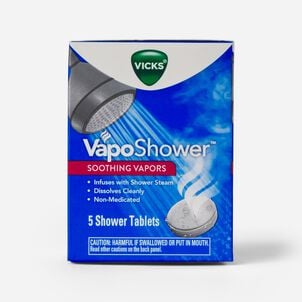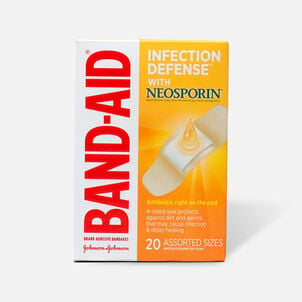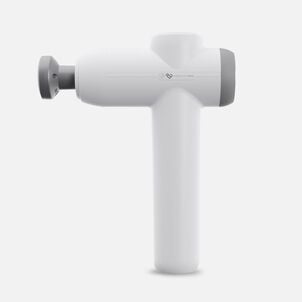Your 2019 mid-year HSA check-in

It's the middle of 2019, believe it or not, which means it's time to check in on your HSA goals, progress, and future planning.
Are you hitting your contribution goals?
If you have coverage for just yourself under an HSA-qualified high deductible health plan (HDHP), you can contribute up to $3,500 to your HSA in 2019, including contributions that an employer or anyone else makes on your behalf. If your HDHP also covers at least one other family member, you can contribute up to $7,000.
Your ability to contribute to your HSA obviously depends on your financial situation, but contributing as much as you can, up to the maximum allowed, is usually a good idea:
- HSA contributions are pre-tax (either via a pre-tax payroll deduction or deducted on your income tax return)
- Any growth in the account (interest or investment growth) is tax-free.
- Withdrawals are tax-free as long as you use the money for qualified medical expenses. This includes your deductible and out-of-pocket costs under your HDHP, but also things that aren't covered by your HDHP such as dental and vision care, HSA-qualified products, long-term care, etc. And even if you later switch to a non-HDHP health plan, you can continue to use the remaining funds in your HSA, tax-free, to cover your out-of-pocket medical expenses.
Unlike FSA contributions, your HSA contribution amounts are not set in stone for the year. You can stop, start, or change them at any point. You can opt to send one lump sum to your HSA, or spread out your contributions throughout the year. So if you haven't been contributing as much as you wanted to, you have the option to bump up your contributions at this point.
You're responsible for making sure that you don't exceed the allowable contribution limit, so if you're automatically contributing a certain amount of money to your HSA via payroll deduction or periodic bank drafts, now's a good time to double check to make sure that your current track isn't going to result in excess contributions by the time the year ends.
Are your withdrawals aligned with your long-term financial goals?
If you're like most people with HSAs, the majority of your contributions end up getting withdrawn each year to pay for medical expenses. There's nothing wrong with this approach to managing your HSA — it's allowing you to use pre-tax money to pay your medical bills, which is certainly better than having to pay them with money that's already been taxed.
But sometimes people simply aren't aware of the other options available to them. This includes the fact that HSA funds can be invested in the stock market as part of your long-term financial plan, as well as the fact that you can cash-flow your current medical expenses — while letting your HSA funds grow long-term — and reimburse yourself from your HSA years or decades in the future (make sure you're saving all of your receipts and keeping careful track of your medical expenses!).
Your mid-year HSA check-in is a good time to familiarize yourself with the flexibility that HSAs offer. Depending on your circumstances, you might decide to bump up your HSA contributions for the rest of the year, and/or opt to let your HSA money continue to grow for now, with a plan to reimburse yourself sometime in the future.
There's no right or wrong answer here, since it depends so much on your unique situation. But the more you understand about HSAs, the better you'll be able to utilize yours.
Are you keeping careful records?
Regardless of whether you're using your HSA to pay medical expenses as they arise or waiting to pay yourself back at some point in the future, the onus is on you to keep track of all your medical expenses. If the IRS ever questions your HSA withdrawals, you'll need to be able to show them receipts.
And, as is the case with any financial data, this process will be much easier if you're systematic and organized with it. In other words, don't just haphazardly stash receipts in a dusty shoebox under your bed!
Future planning
Even though it's only the middle of 2019, employers and insurance regulators are well into their planning for 2020 and beyond. Here are a few points to keep in mind as you plan for the future:
- If your HSA is established through your job, is your employer contributing any money to your account? This could be a potential point for negotiating your compensation.
- Keep an eye out for future federal regulations that could expand access to HSAs. President Trump signed an executive order in June 2018 that directs the Department of the Treasury to "issue guidance to expand the ability of patients to select high-deductible health plans that can be used alongside a health savings account, and that cover low-cost preventive care, before the deductible, for medical care that helps maintain health status for individuals with chronic conditions." (this could potentially open the door for an expansion of what preventive care can be provided pre-deductible on an HDHP).
The executive order also directs the Department of the Treasury to propose regulations that would update Title 26, Section 213(d) — which outlines what counts as a qualified medical expense — to include expenses for things like direct primary care arrangements and health care sharing ministry plans. Depending on how this is done, it could have significant changes for HSA utilization.
- If you're already starting to plan for next year, keep in mind that the contribution limits for HSAs will increase again. In 2020, you'll be able to contribute $3,550 to your HSA if you have self-only HDHP coverage, and up to $7,100 if your HDHP also covers another family member.
--
Tax Facts is a column offering straight up, no-nonsense HSA tax and financial tips, written in everyday language. Look for it on Tuesdays, exclusively on the HSAstore.com Learning Center. And for the latest info about your health and financial wellness, be sure to follow us on Facebook and Twitter.


.png)
















